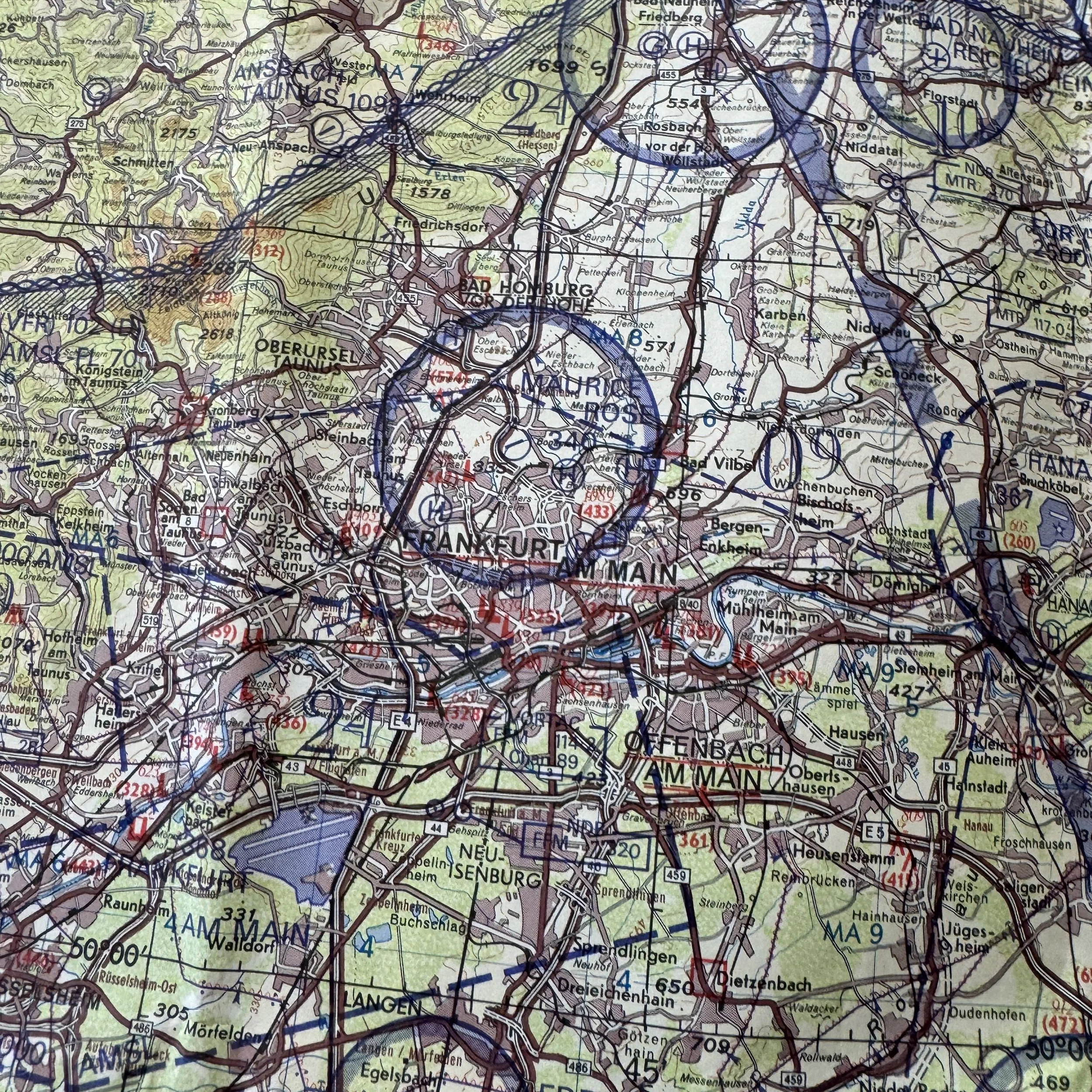VERY LARGE SIZE! Rare Original 1976 Cold War NATO Reforger (Return of Forces to Germany) Mission Map
































VERY LARGE SIZE! Rare Original 1976 Cold War NATO Reforger (Return of Forces to Germany) Mission Map
Comes with hand-signed C.O.A. and full historical write-up
VERY LARGE SIZE: 6 feet 7 inches long x 1 foot 10 inches wide
This incredible and museum-grade artifact is an extremely large Cold War NATO Reforger (Return of Forces to Germany) map used in NATO Reforger missions in 1976. These represented a critical component of the alliance's strategy to deter Soviet aggression in Europe. The 1976 iteration of these exercises stands out as a particularly significant event, illustrating the complexity of NATO's logistical capabilities and the seriousness with which it approached the threat from the Warsaw Pact.
In the context of the Cold War, the NATO Reforger (Return of Forces to Germany) exercises represented a critical component of the alliance's strategy to deter Soviet aggression in Europe. The 1976 iteration of these exercises stands out as a particularly significant event, illustrating the complexity of NATO's logistical capabilities and the seriousness with which it approached the threat from the Warsaw Pact. This essay explores the historical background, strategic objectives, operational execution, and implications of the 1976 Reforger mission.
Historical Context
Cold War Tensions
The Cold War, characterized by the geopolitical rivalry between the United States and the Soviet Union, reached a period of heightened tension in the 1970s. Europe was the primary theater for this confrontation, with both NATO and the Warsaw Pact maintaining substantial military forces along the Iron Curtain. The Reforger exercises were conceived in response to the perceived threat of a rapid Soviet invasion of Western Europe.
Origins of Reforger
Initiated in 1969, Reforger was designed to demonstrate NATO's ability to reinforce its European allies quickly and effectively. The annual exercises aimed to test the speed and efficiency with which American forces could be transported from the United States to Europe and subsequently integrated into the NATO defense structure.
Strategic Objectives of Reforger 1976
Deterrence and Assurance
The primary objective of Reforger 1976, as with previous exercises, was to deter Soviet aggression by showcasing NATO's capability to rapidly deploy and reinforce its forces in Europe. This display of military readiness was intended to assure European allies of the United States' commitment to their defense under the NATO treaty's Article 5.
Testing Logistical Capabilities
Reforger 1976 aimed to test and improve the logistical frameworks required for the rapid deployment of large numbers of troops and equipment. This included the airlift and sealift capabilities of the United States, the readiness of pre-positioned equipment in Europe, and the efficiency of NATO's command and control structures.
Enhancing Interoperability
Another key objective was to enhance the interoperability of NATO forces. Given the diverse nature of NATO's military forces, which included troops from multiple nations with different languages, equipment, and doctrines, Reforger provided a critical opportunity to practice working together in a coordinated manner.
Operational Execution
Scope and Scale
Reforger 1976 was one of the largest and most ambitious exercises in the series. It involved the participation of over 70,000 troops, including significant contingents from the United States, West Germany, and other NATO members. The exercise spanned several weeks and covered extensive areas of West Germany.
Phases of the Exercise
The exercise was divided into several phases:
Deployment Phase: This phase focused on the rapid transportation of troops and equipment from the United States to Europe. The success of this phase depended heavily on the capabilities of the Military Airlift Command and the Military Sealift Command.
Reception, Staging, and Onward Movement: Upon arrival in Europe, troops and equipment were received, staged, and moved to their designated operational areas. This phase tested the efficiency of European logistical hubs and pre-positioned storage sites.
Field Operations: The final phase involved simulated combat operations, where NATO forces conducted maneuvers to repel a hypothetical Soviet invasion. This phase tested tactical doctrines, command and control systems, and the overall readiness of NATO forces.
Key Components and Technologies
Reforger 1976 saw the use of advanced technologies and equipment for its time. This included the deployment of the new M1 Abrams tanks, advanced communications systems, and improved logistical support vehicles. The exercise also utilized innovative air mobility tactics, incorporating strategic airlifters like the C-5 Galaxy and the C-141 Starlifter.
Implications and Outcomes
Strategic Success
Reforger 1976 was largely deemed a strategic success. It effectively demonstrated NATO's ability to reinforce Europe rapidly, thereby enhancing deterrence against Soviet aggression. The exercise showcased the robust logistical capabilities of the United States and its allies, bolstering the credibility of NATO's collective defense posture.
Logistical Lessons
The exercise also highlighted several logistical challenges and areas for improvement. Issues such as the coordination of multinational forces, the efficiency of pre-positioned equipment, and the integration of new technologies were identified and addressed in subsequent exercises.
Political Impact
Politically, Reforger 1976 reinforced the unity and resolve of NATO member states. It sent a clear message to both allies and adversaries that NATO was prepared and capable of defending Western Europe. This unity was crucial in maintaining the balance of power during the Cold War.
Military Innovations
The lessons learned from Reforger 1976 led to several innovations in military doctrine and logistics. NATO improved its command and control systems, refined its rapid deployment strategies, and enhanced its interoperability protocols. These improvements had lasting impacts on the alliance's overall effectiveness.
The NATO Reforger mission of 1976 was a pivotal event in the history of the Cold War. It demonstrated NATO's capability to rapidly reinforce Europe in the face of a potential Soviet threat, thereby strengthening deterrence and alliance cohesion. The exercise provided valuable insights into logistical and operational challenges, leading to significant improvements in NATO's military effectiveness. As a symbol of transatlantic solidarity and preparedness, Reforger 1976 played a crucial role in maintaining the strategic stability of Europe during one of the most tense periods of the Cold War.